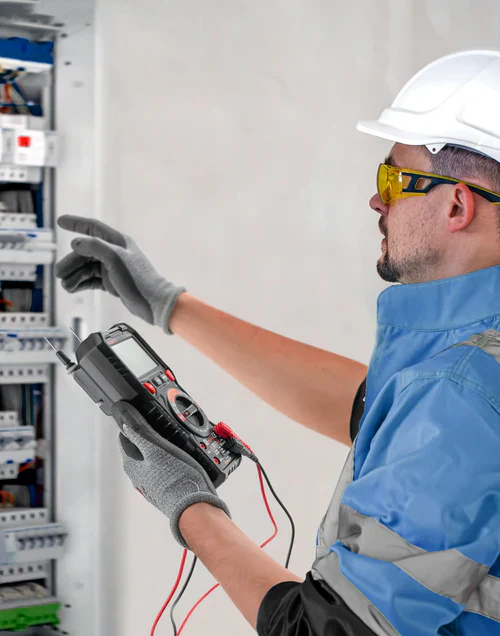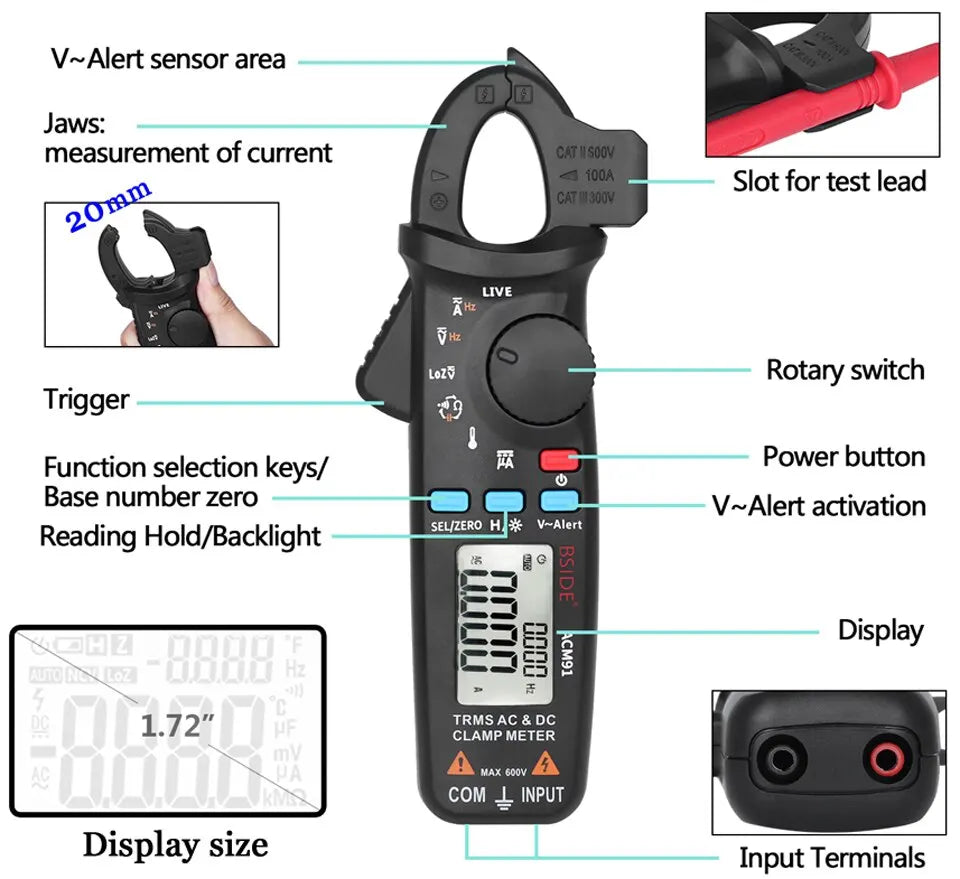Learning how to use a multimeter can feel intimidating for beginners, but with the right guidance, anyone can get started with basic electrical measurements. Whether you’re testing batteries, checking wall outlets, or diagnosing circuits in DIY electronics, a digital multimeter is one of the most essential tools to have. In this beginner’s guide, we’ll walk you through the basics using the reliable and beginner-friendly BSIDE smart multimeters.
What Is a Multimeter?
A multimeter is a handheld device that can measure voltage, current, resistance, and more. There are two main types:
-
Analog multimeters, which use a needle display.
-
Digital multimeters (DMMs), which are more accurate and easier to read — ideal for beginners.
At BSIDE, we focus on digital models like the BSIDE ZT-X or BSIDE S11, designed for intuitive use, accurate readings, and enhanced safety.
Multimeter Parts You Should Know
Before you start, familiarize yourself with these parts:
-
Display screen (usually digital)
-
Selection dial (for choosing what to measure: V, A, Ω, etc.)
-
Ports/jacks for inserting probes (COM, VΩmA, etc.)
-
Test leads (red = positive, black = ground)
Our BSIDE ZT-5B Auto-Ranging Multimeter simplifies things by automatically choosing the measurement range — no need for manual guessing.
Basic Measurements Beginners Should Learn
1. Measuring Voltage (AC/DC)
-
Plug the black lead into COM, red into V.
-
Turn dial to V (choose AC or DC).
-
Place the probes across the terminals.
-
Read the value on the display.
✅ Tip: Use the BSIDE S30X Multimeter, which supports both AC/DC voltage testing with a clear LCD display.
2. Measuring Resistance (Ω)
-
Dial to the Ω symbol.
-
Ensure the power is off in the circuit you're testing.
-
Touch both leads to either end of the resistor or wire.
🎯 Ideal for: Troubleshooting appliance parts or circuit boards. The BSIDE S8 Smart Multimeter has an auto/manual mode for this.
3. Checking Continuity
-
Select the diode or continuity mode (usually a soundwave symbol).
-
Touch the leads together. You should hear a beep if the circuit is complete.
-
Use this to check fuses, wires, or switches.
🛠️ BSIDE ZT-M0 Multimeter includes a strong beeper and battery test mode — perfect for basic diagnostics.
Safety Tips for Beginners
-
Always start with the highest range setting (unless using auto-ranging).
-
Never test resistance on a live circuit.
-
Check your multimeter’s fuse and battery regularly.
Best BSIDE Multimeters for Beginners
Here are some beginner-friendly models:
-
BSIDE ZT-X – Easy-to-read triple display, temp test
-
BSIDE S10 – Color LCD, NCV (non-contact voltage)
-
BSIDE A10 – True RMS, compact and budget-friendly
Visit our official website to explore full specs, user manuals, and helpful videos.
Conclusion
Learning how to use a multimeter is an essential skill for DIYers, technicians, and electronics enthusiasts alike. With intuitive models like BSIDE S11, even complete beginners can safely and confidently measure voltage, current, resistance, and more. Ready to get started? Browse our full selection of digital multimeters and testers tailored for your needs.




Share:
What to avoid when using a multimeter?
Multimeter vs Test Pen: Which Tool Should You Use?